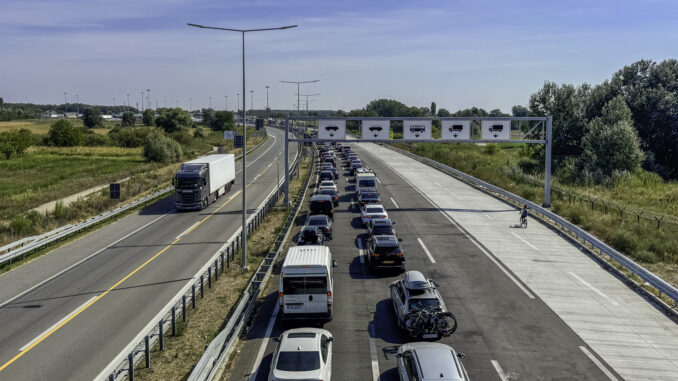
Crossing any of the checkpoints along the Serbian–Hungarian border is inevitably and constantly accompanied with several hours of queuing. This is all the more true during the holiday seasons and summer vacations. However, even a long weekend can make the BorderWatcher app go all red while the Határfigyelők community page is full of comments posted by passengers dissatisfied with long waiting.
Most of those affected by this phenomenon are commuters living near the border and guest workers from Western Europe.
Last autumn, Átlátszó Vajdaság in cooperation with Átlátszó published a comprehensive analysis of the situation at Serbian–Hungarian border crossings. The opening hours of the Horgos–Röszke 2 road crossing have been changed several times since then, and passenger rail traffic between Subotica and Szeged has also started. We looked at how all that have affected waiting times at the border.
No Lasting Solution
In November 2023, Dr. Bálint Pásztor, the then acting President of the Alliance of Vojvodina Hungarians (VMSZ) announced, that the opening hours of the Horgos–Röszke 2 border crossing would be extended to 24 hours from 20 November. Yet, it soon turned out, that the extension was not for good: it was in force until the end of January.
Then, late January, the Hungarian police issued a communication, that in order to speed up crossing the border and reduce waiting times, the Röszke road crossing point would stay open 24 hours a day until 20 March.

On 6 March, Hungary’s Minister of Foreign Affairs and Trade, Péter Szijjártó held a joint press conference with Bálint Pásztor, and he referred to the improved conditions of border crossing as an indicator of good relations between Serbia and Hungary. As he said:
“at the request of the Alliance of Vojvodina Hungarians, we have decided to change the opening hours of the Röszke–Horgos 2 border crossing from limited to 24-hour opening”.
Bálint Pásztor said that “from the perspective of Hungarians in Vojvodina, it is very important that the Horgos–Röszke 2 border crossing will continue to operate 0–24 in the future as well”.
However, two weeks after the joint press conference, the opening hours of the border crossing were shortened.
Speculations about the reason were brought to an end by Bálint Pásztor’s statement. He said that passenger counts had been carried out, and the figures showed that an average of 20–30 people crossed the border between 11 p.m. and 5 a.m. during the examined period. Consequently, the opening hours would have been restored to 7 a.m. to 7 p.m., but as a result of telephone consultations with the Hungarian and Serbian Interior Ministers, Sándor Pintér and Bratislav Gašić, an extended opening time was agreed: the Horgos–Röszke 2 road crossing point will be open from 5 a.m. to 11 p.m.
Extended working hours of this border crossing has produced statistically good results
Although the Hungarian police have estimated data about crossing times on their website, the BorderWatcher app provides a more realistic picture, since it builds upon the experiences of those who are crossing the border, and it provides the most accurate status on checkpoints when users share as much information as possible.
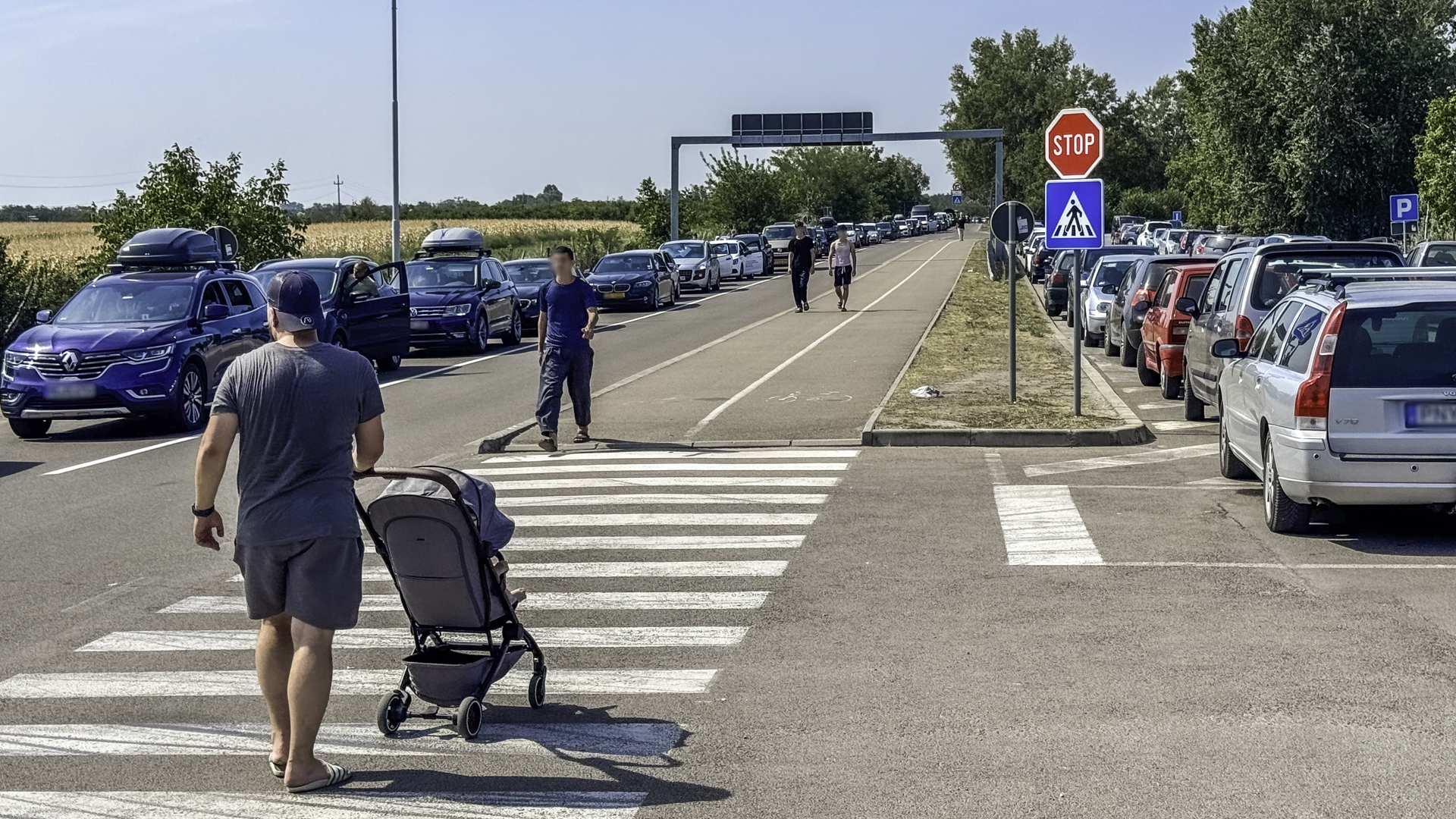
While the average waiting time at H1–R1 was approximately as in the same period last year, the longest waiting time at H2–R2 during the 24-hour opening period was 300 minutes (5h) only twice, and the average waiting time exceeded 60 minutes six times in total. The highest average was 85 minutes (1h 25′) from Serbia to Hungary and 108 minutes (1h 48′) from Hungary to Serbia, but the average of the four-month period was typically between 10 and 19 minutes in both directions.
The graph is interactive. Click on the drop-down menu to select a border crossing.
Also, between 21 March, i.e. the introduction of working hours from 5 a.m. to 11 p.m., and the end of July, there were no waiting times longer than 300 minutes (5h) at the Horgos–Röszke 2 crossing. The average waiting time from Serbia to Hungary exceeded 60 minutes twelve times and three times in the opposite direction. The maximum average in both directions was 109 minutes (1h 49′). However, in the four months from March to July, the waiting time in both directions was, typically, between 18 and 26 minutes.
Waiting times have shortened despite the fact that 40% more passengers crossed the Serbian–Hungarian border at the Horgos–Röszke 2 crossing in the first 7 months of 2024 compared to the same period in 2023.
However, even though the situation had improved during the off peak season, that had no impact on traffic congestion at the end of the biggest summer holidays.
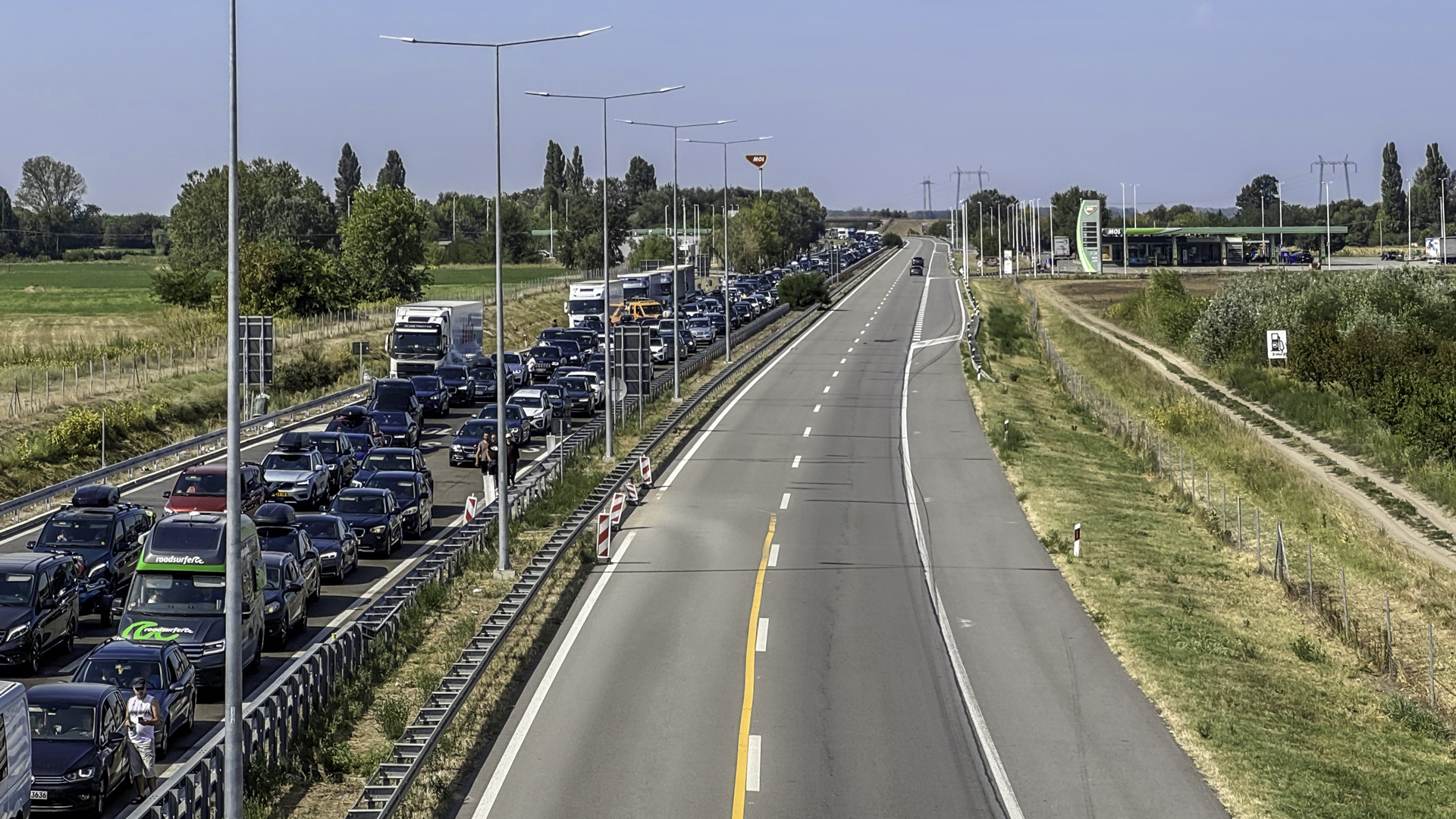
Around midnight in mid-August, after the Horgos–Röszke 2 crossing closed at 11 p.m., the Google Maps traffic live image shows that the queue remained even outside working hours. These travellers would rather wait for the 5 a.m. opening and, at least, rest until then, than idle all night waiting at the crossing open 24/7.
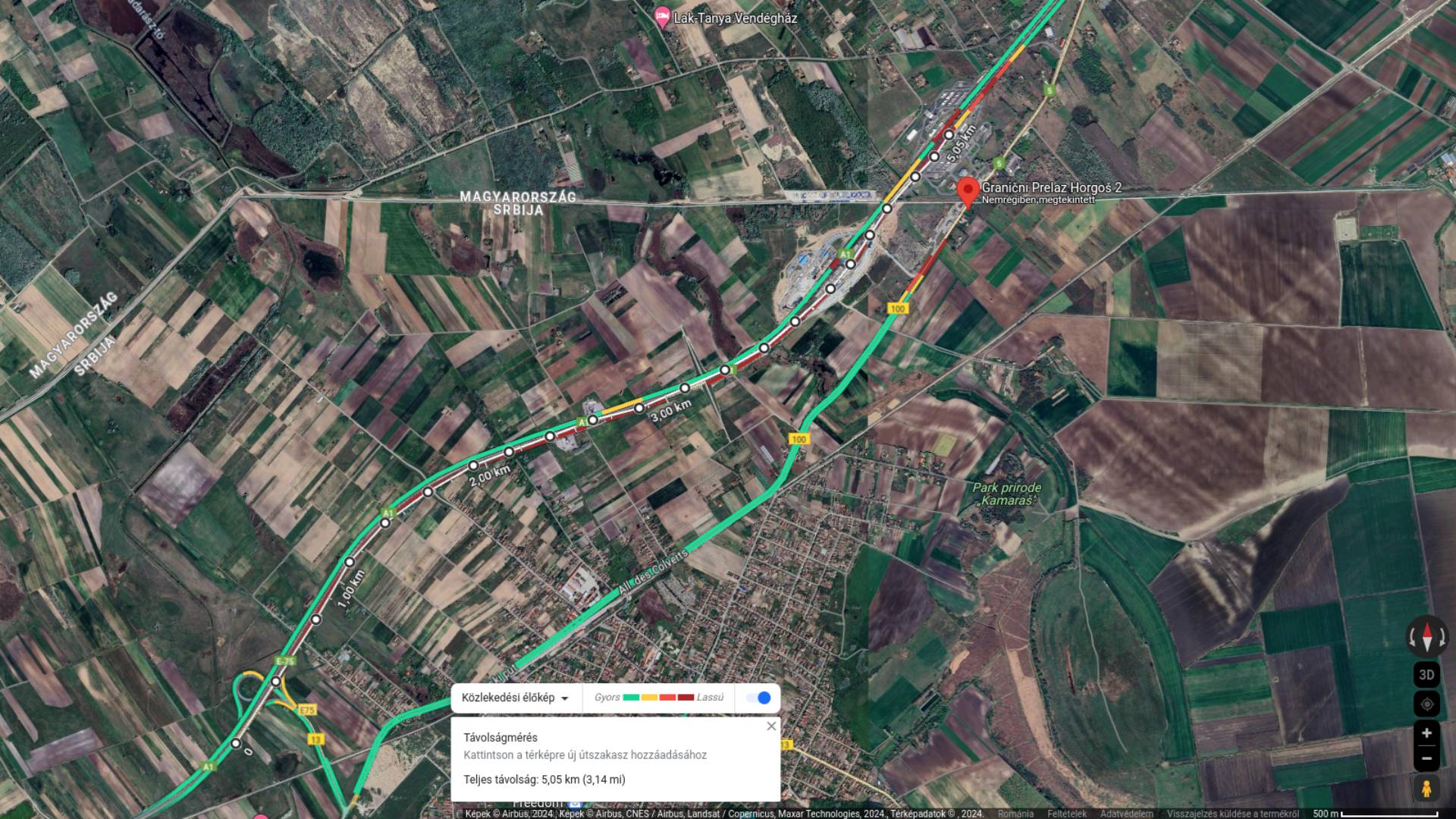
Meanwhile, a lengthy queue of vehicles, – sometimes up to 7 kilometers long – was formed at the Horgos–Röszke 1 crossing and such events put smaller crossings under greater pressure. During the busiest weekend of August so far, the minimum waiting time was not shorter than 5 hours at any of the border crossings in Serbia.
The system is still unable to cope with the high volume of vehicle traffic.
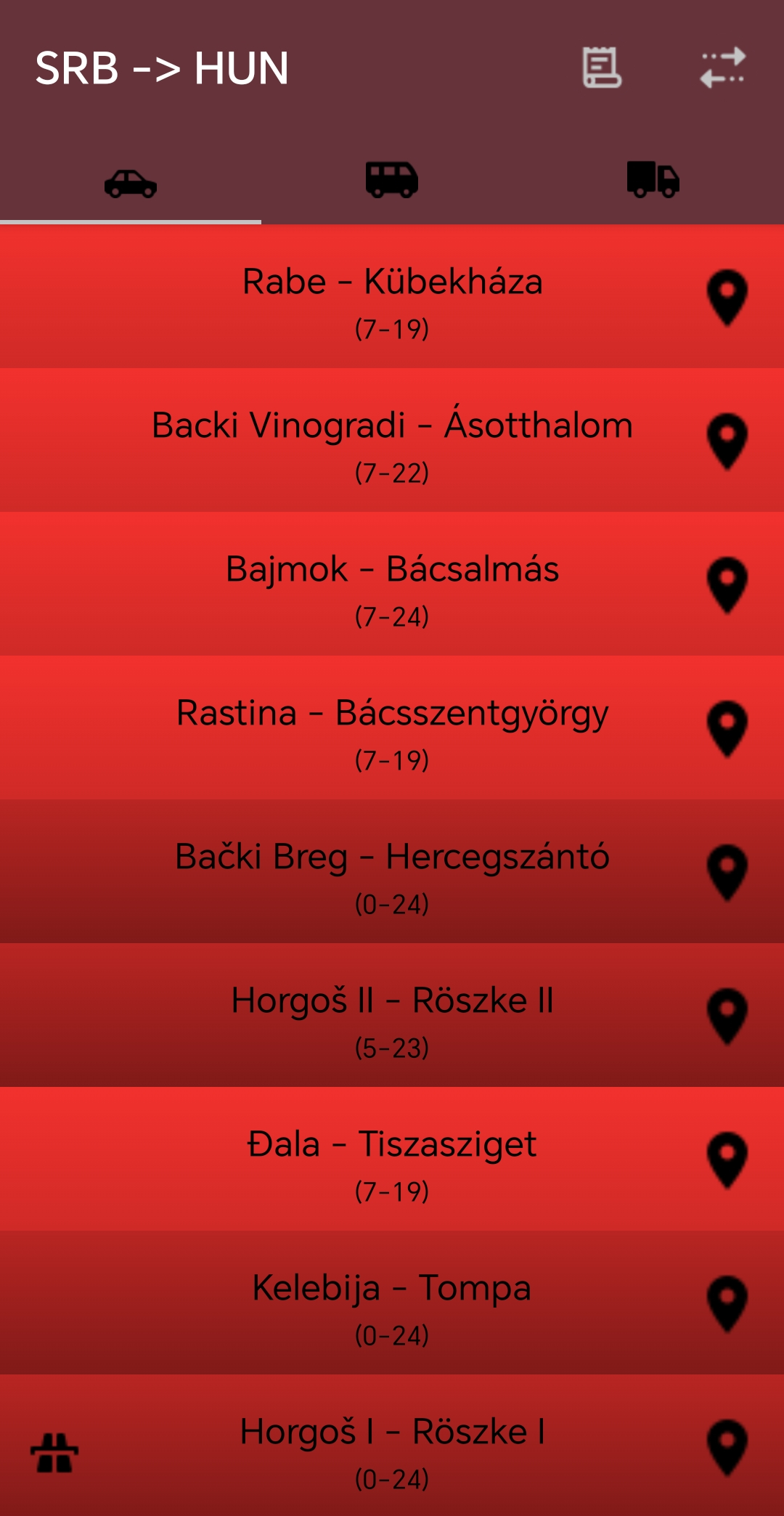
In the meantime, according to the latest communication, the previously promised, new border control system, the EES (Entry/Exit System), is expected to be introduced from 10 November.
More than 50,000 passengers have crossed the border by rail since November
At the beginning of the migration crisis, in September 2015, rail traffic between Subotica and Szeged was temporarily halted after the border barrier – a barbed wire fence – was built on the Serbian–Hungarian border. Instead of restarting, the Röszke–Szeged, and the international Szabadka–Szeged transport by rail was cancelled at the end of October, due to low passenger numbers.
The need for track reconstruction became urgent in 2010, and by that time both the tracks and the wagons on the Serbian side were in such a dilapidated state that passengers had to get off the Serbian train at the border in Röszke and transfer to the Hungarian motor carriage.
The reconstruction of the Subotica–Szeged railway, however, took more than ten years.
The Memorandum on the improvement was agreed on by the Serbian and Hungarian governments at a joint government meeting in April 2019. The reconstruction finally started in 2021. Originally, the works were scheduled to be completed by November 2022. The Serbian side of the railway was accomplished in 6 months, but the Hungarian section was significantly lagging behind schedule, and, eventually, the Subotica–Szeged railway track was reopened on 28 November 2023 after an eight-year suspension.

According to the Hungarian Central Statistical Office, rail transport is becoming an alternative for more and more people. In just over half a year, a total of 55 953 people travelled by train in both directions, which roughly equals the total number of passengers in the two and a half years before the 2015 suspension.
The international Kelebia railway line, which directly connects Subotica and Budapest, ceased to operate in 2020. Currently, this section is under construction as part of the Budapest–Belgrade high-speed railway.
Further improvements of the railway are also planned between Serbia and Hungary. During his visit to Subotica in December, Szijjártó said that the Subotica–Baja railway line would soon be reconstructed as well.
Text: Virág Gyurkovics
Data visualisation: Krisztián Szabó (Átlátszó), Andrea Dancsó (Átlátszó Vajdaság)
The cover photo shows the Horgos–Röszke 1 motorway crossing on 16 August 2024. Source: Átlátszó Vajdaság
The text was originally published in Hungarian on 19. 08. 2024.
